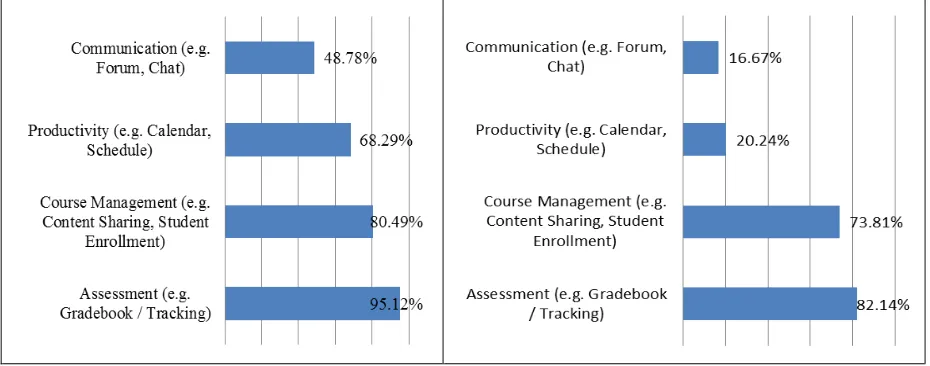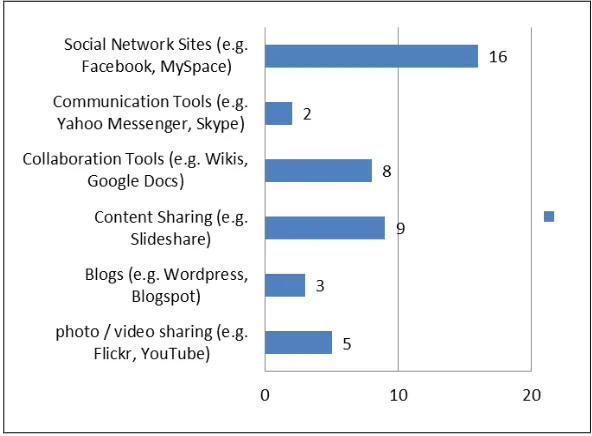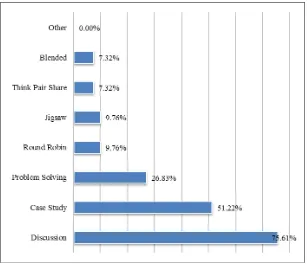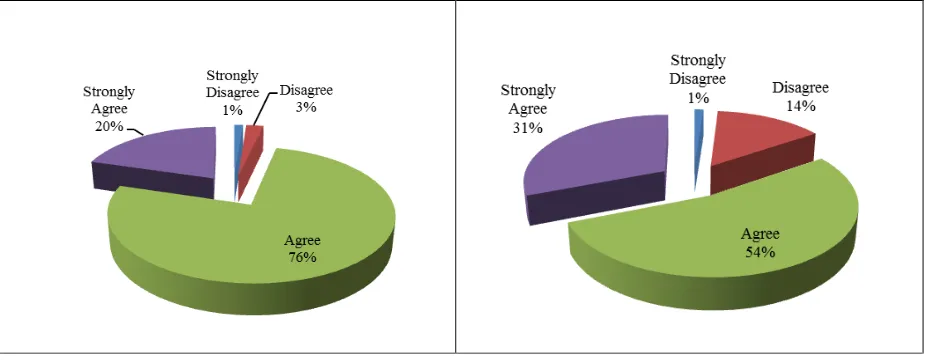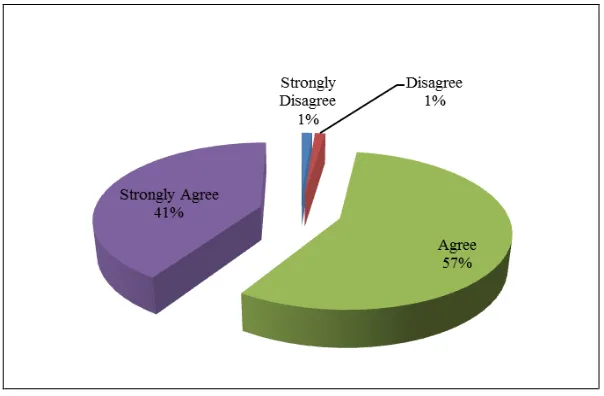Incorporating Learning Management System with Social Network Sites
to Support Online Collaborative Learning: Preliminary Analysis
Sharifah Nadiyah Razali1, Faaizah Shahbodin 2, Norasiken Bakar2, Hanipah Hussin2, Mohd Hafiez Ahmad 3, Normala Sulaiman 4
1, 2Faculty of Information and Communication Technology
Malaysia Technical University Malacca
Hang Tuah Jaya, 76100, Durian Tunggal, Melaka, Malaysia
1[email protected], 2[email protected], 2[email protected]
2
Centre of Language and Islamic Malaysia Technical University Malacca
Hang Tuah Jaya, 76100, Durian Tunggal, Melaka, Malaysia [email protected] situations, to analyse information, to collaborate, to solve problems, and to make decisions. Utilising emerging technologies to provide expanded learning opportunities is critical to the success of future generations. In this paper, the author aims to discover if the 21st century’s skills (collaboration, communication, problem solving, and critical thinking) can be discovered through integration of Learning Management System with Social Network Sites. In this preliminary study, two sets of questionnaires were distributed to 84 diploma students and 41 lecturers from Politeknik Ibrahim Sultan, Politeknik Merlimau, Politeknik Tuanku Syed Sirajuddin, Politeknik Kota Kinabalu and Politeknik Sultan Idris Shah. This paper shares the preliminary findings on the perceptions of the students and lecturers on the use of Learning Management System, Social Network Sites and Collaborative Learning in the teaching and learning process. All collected data had been analyse using SPPS 19 software and the results of the study showed the existence of difficulties in communication and interaction in existing LMS and the need to assess students’ engagement in group projects. Incorporating LMS with Facebook to support Online Collaborative Learning as recommendation for future research is suggested.
Keywords: 21st Century Learning * Learning Management System (LMS) * Social Network Sites (SNSs) * Online Collaborative Learning (OCL)
1
Introduction
The benefits of collaboration in learning have been proven by Social Constructivism [1]. According to [2], learning tends to be most effective when students are in the position to work collaboratively in expressing their thoughts, discussing and challenging the ideas with others, and working together towards a group solution to the given problem. Collaborative learning, which in the online environment is typically referred to as online teams or online groups, refers to instructional activities for getting students to work together online to achieve common educational goals. Interest in collaboration is a natural outgrowth of the trend in education toward active learning, whereby students become involved in constructing their own knowledge through discovery, discussion, and expert guidance. Research by [3] shows that undergraduates improve their academic performance by interacting with their peers in an online collaborative learning (OCL).
To support collaborative learning environment, educator must track their student learning process. Therefore, [4] suggests that educators including teachers and lecturers should closely monitor how their students work together in a collaborative learning process for effective learning to take place. By monitoring the collaborative
collaborative learning, it is difficult for educators to monitor and evaluate students’ participation in group project [6]. Therefore, certain strategies must be applied to monitor the learning process.
Even though many researchers in education field have looked into the potential of adapting Social Network Sites (SNSs) in their teaching and learning process [7–9], there are a few studies on integration of conventional Learning Management System (LMS) such as Moodle with SNSs. This has left a gap in body of knowledge on how LMS can integrate with SNSs platform to effectively facilitate learning especially in an OCL environment. Therefore, the researcher aims to incorporate LMS and SNSs to support OCL.
This paper shares the preliminary findings on the perceptions of the students and lecturers on the use of LMS, SNSs, and CL in the teaching and learning process. Discussion and future research are provided based on the findings of this study.
2
Materials and Methods
There were two survey instruments used in this study: student and lecturer survey. The purposes of the survey were to gather information about the current problem in teaching and learning using e-learning Curriculum Information Document Online System (CIDOS) at Malaysia Polytechnic. The lecturer survey instrument was a 23-item questionnaire and the student survey was a 19-item questionnaire. Both questionnaires consisted of three parts: LMS, SNSs, and CL. For LMS and SNSs sections, both instruments were adapted and modified from [10],and for CL section, it was adapted and modified from [11].
The respondents were randomly selected in order to collect information for this research. The questionnaires were distributed were given to 84 diploma students and 41 lecturers and participation was voluntary. The questionnaires were personally administered to respondents from Politeknik Ibrahim Sultan, Politeknik Merlimau, Politeknik Tuanku Syed Sirajuddin, Politeknik Kota Kinabalu and Politeknik Sultan Idris Shah.
3
Finding
This section presents the findings based on the focus of this study, which is to discover the respondents’ perceptions on LMS, SNSs, and CL environment. Therefore, only the items relevant to the focus are presented in this section. In this study, the Cronbach alpha was 0.863 for the student survey instrument and 0.832 for the lecturer survey instrument. [12] indicates that a questionnaire has high reliability if the Cronbach alpha is above 0.80. Therefore, it can be concluded that the internal consistency of the data was achieved.
In terms of the trends in LMS usage, Figure 1 shows that the two main LMS features most frequently used by lecturers were Assessment (95.12%) and Course Management (80.49%). On the other hand, the least used features by lecturer were Communication (48.78%) and Productivity (68.29%). Next, as shown in Figure 2, the two main LMS features most frequently used by students were Assessment (82.14%) and Course Management (73.81%) while the least used features in LMS the by students were Productivity (20.24%) and Communication (16.67%).
As shown by Figure 3, Social Networking such as Facebook, MySpace, and Twitter was the most commonly used alternative application by lecturers to complement the LMS provided by their institutions (39.02%) followed by Content Sharing (21.95%).
Figure 3: Lecturer’s alternative application to complement LMS
Figure 4 and Figure 5 show the percentage of SNSs based on lecturers’ and students’ preferences. 95.12% of lecturers and 95.24% of students preferred Facebook as their favourite SNS.
Figure 4: Social Network Sites based on Lecturers Preferences
Figure 5: Social Network Sites based on Students Preferences
Figure 6: Collaborative Learning activities implemented by lecturers
Figure 7: Lecturers’ perceptions on free rider issues Figure 8: Lecturers’ measuring strategy
In order to identify students’ perceptions on the CL environment, the following items were given: (1.) Students’ Group Work Experiences; (2.) Students’ Attitude towards Working in Group; (3.) Students’ Opinion about Lecturers’ Measuring Strategy; (4.) Students’ View about the Marks of Group Project; and (5.) Students’ Preferences on Group Marks Evaluation. A series of questions measured with four-point Likert scale were designed to measure levels of agreement, with 1 = strongly disagree, 2 = disagree, 3 = agree, and 4 = strongly agree. The author used four-point Likert scale to eliminate possible misinterpretation of mid‐point. Use of five-point Likert scale could make the respondents prefer not to take side between agree and disagree by always marking the most neutral answer [13]. Therefore, in cases in which specific respondents’ opinions are essential such as opinion on services or products, a four-point Likert-scale can be employed.
Figure 9: Students’ group work experiences Figure 10: Students’ attitude towards working in group
70% of the respondents agreed and 12% of the respondents strongly agreed with the statement that lecturers only evaluated the output and the respondents will get equal marks in their group (refer to Figure 11). Figure 12 shows that more than half of the respondents (57%) strongly agreed and 33% of the respondents agreed with the
statement “It is unfair for all members to get same marks”. 57% of the respondents agreed and 41% of the
respondents strongly agreed that lecturer should evaluate the group work based on student contributions (refer to Figure 13).
Figure 13: Students’ preferences on group marks evaluation
4
DISCUSSION AND CONCLUSION
Most educational institutions have implemented LMS to centralise the contents, learning, and assessment activities in one single learning environment. The educators and learners use forum and discussion boards to facilitate their communication and collaboration work. However, from the results, it was found that the lecturers preferred to employ Social Network Sites to facilitate their communication than using LMS. This result showed that there were weaknesses in LMS in the field of communication and collaboration among users. Moreover, this results is similar with the result by [14]. The authors use other applications as a replacement for built-in discussion forum in LMS. However, this is different from the result reported by [15], who believe that the SNSs may cause distraction to the students, especially the newly enrolled students. Therefore, the author of this present study agrees with [10], [16] that the existing LMS should be upgraded with social network function.
Recent studies have reported how Facebook can be used to enhance learning process [17] and to enhance collaboration activities [14], [18]. In contrast with the findings by [19], Facebook simply cannot be successful in meeting the needs of the students; it can only be used as a supplement due to the incapability and limitation of the LMS such as in networking and communication. The findings from the survey in this present study indicated that 95% of students and 98% of lecturers have their own SNSs account, and 95.24% of students and 95.12% of lecturers were Facebook subscribers. Therefore, the author suggests upgrading the existing LMS with Facebook. In each collaborative activity, evaluation must also emerge. It was difficult for the lecturers to monitor and evaluate the student participation in group project [6]. According to [20], a detailed evaluation on collaborative processes will help students achieve the desired goals. Therefore, lecturers had to apply certain instrument to record and monitor student discussion and to assess student contribution from the discussion. [21] find that students prefer to use tool that they are familiar with. Therefore, on the next stage of this present research, the author will incorporate Learning Management System (LMS) with Facebook to enable students and lecturers communicate on Moodle through Facebook. This will be used as an instrument to support OCL.
Acknowledgments.
The author would like to thank people who have been supportive throughout this study.References
[1] L. S. VYGOTSKY, Mind in Society. Cambridge (Massachusetts): Harvard University Press, 1978.
[2] R. T. Johnson, D.W., & Johnson, Cooperation and competition: Theory and research. Edina, MN: Interaction Book Company., 1989.
[3] Y. Chen, “Learning styles and adopting Facebook technology,” in Technology Management in the Energy Smart
World ( …, 2011, pp. 1–9.
[4] Q. Wang, “Design and evaluation of a collaborative learning environment,” Computers & Education, vol. 53, no. 4, pp. 1138–1146, Dec. 2009.
[5] Q. Wang, “Using online shared workspaces to support group collaborative learning,” Computers & Education, vol. 55, no. 3, pp. 1270–1276, Nov. 2010.
[6] T. Ellis, W. Hafner, and K. Harman, “Building a framework to support project-based collaborative learning experiences in an asynchronous learning network,” International Journal of Doctoral Studies, vol. 4, 2009. [7] M. Al-Zoube, “E-Learning on the Cloud,” International Arab Journal of e-technology, vol. 1, no. 2, pp. 58–64,
2009.
[8] J. McCarthy, “Utilising Facebook: immersing Generation-Y students into first year university,” The Journal of the Education Research Group of Adelaide, vol. 1, no. 2, pp. 39–49, 2009.
[9] D.-Z. Marijana, B. L. Aleksandra, and R. M. Aleksandar, “Fostering engineering e-learning courses with social network services,” 19th Telecommunications Forum (TELFOR), pp. 1–4, 2011.
[10] M. A. Embi, “e-learning in Malaysian Higher Education : Status, Trends and Challeges,” Department of Higher Education Ministry of Higher Education 2011, 2011.
[11] N. Capdeferro and M. Romero, “Are online learners frustrated with collaborative learning experiences?,” The International Review of Research in Open and Distance Learning, vol. 13, no. No 2, 2012.
[12] M. N. A. Ghaffar, Penyelidikan Pendidikan. Skudai: Penerbit Universiti Teknologi Malaysia., 1999.
[13] K. Green and T. Lam, “Likert Scale TheSame As‘ Don’t Know’ for Informed and Uninformed Respondents? Effects of Serial Position and Labeling on Selection of Response Options,” portfolio.du.edu, vol. 6641, no. May, 2010.
[14] R. Hern’ndez, H. R. Amado-Salvatierra, C. Guetl, and M. Smadi, “Facebook for CSCL, Latin-American Experience for Professors,” in 2012 IEEE 12th International Conference on Advanced Learning Technologies, 2012, pp. 327– 328.
[15] C. Li, Z. Dong, and R. Untch, “Peerspace-an online collaborative learning environment for computer science students,” in Advanced Learning …, 2011, pp. 409–411.
[16] D. Marijana, M. Aleksandar, B. Zorica, B. Dušan, and S. Krčo, “Providing Adaptivity in Moodle LMS Courses Adaptive e-learning systems,” Educational Technology & Society, vol. 15, pp. 326–338, 2012.
[17] P. Ractham and D. Firpo, “Using Social Networking Technology to Enhance Learning in Higher Education: A Case Study Using Facebook,” in 44th Hawaii International Conference on System Sciences, 2011, pp. 1–10.
[18] F. L. Cerdà and N. C. Planas, “Facebook ’ s Potential for Collaborative e-Learning,” Revista de Universidad y Sociedad del Conocimiento (RUSC), vol. 8, no. 2, pp. 197–210, 2011.
[19] A. Ishan Sudeera and C. Y. Tham, “Implementation of Facebook Study Groups as Supplements for Learning Management Systems ( LMS ) in Adult ODL Environments,” Asian Association of Open Universities Journal,, vol. 7, no. 1, pp. 1–11, 2011.
[20] K. Swan, J. Shen, and S. Hiltz, “Assessment and collaboration in online learning,” Journal of Asynchronous
Learning …, pp. 45–62, 2006.
[21] M. Suthathip and M. Songrit, “Can Facebook be a New Communicative Channel in a Student-Centered LMS?,” in
